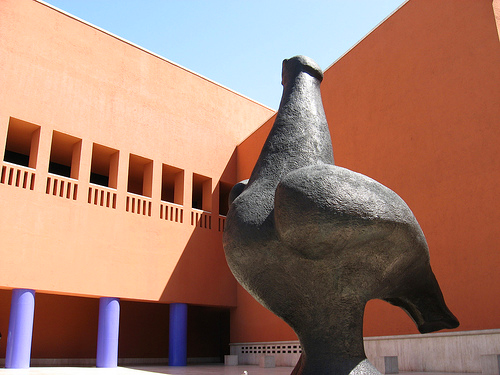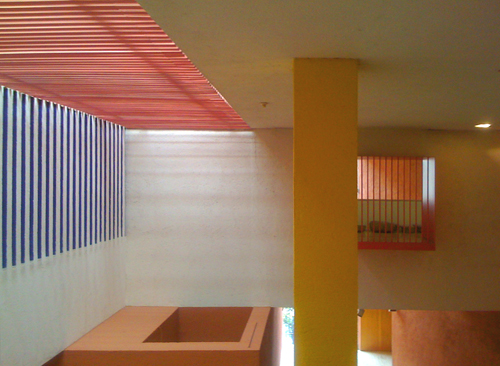
[MARCO photo by leckan18]
We recently spent some time down in Monterrey Mexico, and although it’s the country’s third largest city, it seems relatively untraveled by foreigners. Monterrey is a big city of 4 million inhabitants and subsequently it’s full of significant built work. Most notable is the Museo de Arte Contemporaneo and the Hotel Camino Real, both designed by Ricardo Legorreta.

[MARCO photo by BUILD LLC]

[MARCO photo by jorge_ayala]
Both projects exemplify the architect’s dedication to simplicity and form. On each project the building envelope gracefully filters natural light, water becomes a ceremonial presentation and the geometrical relationships are gratifying. The bold colors of the exteriors provide pleasing contrasts to the bright blue skies; the interiors offer sleek sanctuaries that become canvases for culture and life. In short, the experience of simply walking through these spaces is magnificent. These are destination buildings, this is Architecture with a capital A.
[Camino Real photo by booked.net]
Over the years, the needs of a building change and, despite the importance of their design, these buildings are no exception. In order to accommodate new technologies and additional amenities we found a number of unsettling appendages tacked on; a 3 level steel and glass walk-in wine cellar, elliptical floor to ceiling aquariums in the restaurant lobby and water tanks with bubble jets for visual effect at the bar. In-and-of themselves none of these items were poorly designed, they were each clean and modern. But added to the building together they gave the impression that someone had gone on a shopping spree to the Sharper Image to outfit the building with all the latest design trinkets. The average person probably wouldn’t even notice the incongruence with the original architecture but those with a visual eye would most likely see the additions as unnecessary bling.
[Camino Real photo by booked.net]
[Camino Real photo by booked.net]
The Legorreta work brought up an important issue. Given the need to evolve and adapt to meet the ever changing demands of society, how should architecture of this caliber be supplemented? While the necessary modifications may extend beyond the original vision of the architect, additions to a building of this character shouldn’t adulterate the fundamental vision. We see three possibilities:
A. Stay true to the architectural vision by not changing the appearance of the building (or cleverly hiding the new functions “behind” the architecture).
B. Hire the original architect to integrate the enhancements into the original work.
C. Hire a good architect (whether it’s the original architect or not) and make a clean break from the previous design. The original design should be respected and maintained, the new work should pay homage to the original work by not getting in the way of it or copying it.

[MARCO photo by vicos]





